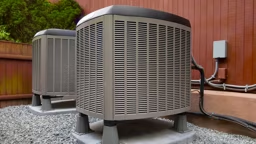
Photo: Eccotemp
Tankless water heaters have a number of benefits. They provide hot water on demand while reducing your utility bills by roughly 30 percent, due to the elimination of standby-energy losses. They’re about the size of a suitcase, so they save space, and they last up to 20 years — almost twice as long as a tank-based unit.
However, tankless water heaters are limited by how much water they can heat at any given time. Opt for a unit that’s too small, and it won’t have the capacity to meet your household needs. Go too big, and you will overpay. Proper sizing is key.
- How many GPM (gallons per minute) of hot water you need at times of peak consumption. (Remember, tankless water heaters don’t store water; they heat it as it flows.)
- The required temperature “rise,” which is determined by feed water temperature and output water-temp settings.
What if you undersize? Bad idea! If the required hot water demand surpasses the possible maximum, even if only temporary, most water heaters will throttle the flow automatically. This means less hot water at every outlet and, therefore, a temperature and/or pressure drop.
What if you go too big? Oversizing is not a big deal in terms of consumption, but may add unnecessary upfront cost.
There are three steps to find the proper tankless water heater size for your home:
Step 1
Flow Rate – How Many GPM Will You Need?
To figure out your peak hot water demand, simply determine which devices you want to run simultaneously and how many there are, then add up their flow rates.Here’s how: Take a gallon bucket and track how long it takes your showerhead, kitchen faucet, bathroom taps, etc., to fill it. Then use this formula to calculate the flow rate for each outlet:
Flow rate = 60 / seconds required to fill bucket
Step 2
Temperature Rise
The next step is to determine your required temperature rise. Subtract the temperature of your feed water from the desired output water temp.Required temp rise = Output water temp – Feed water temp
How can you determine the temperature of feed water? You have two options: Measure with a thermometer or use Best Osmosis Systems’ Ground Water Temperature Chart.
The area in which you live plays a huge role as far as average groundwater temperature is concerned. In warmer climates, the temperature will naturally be higher, up to 77 degrees Fahrenheit in southern Florida. Whereas in Alaska, parts of North Dakota, Minnesota, Wisconsin and other northern states, the groundwater temp can be as low as 37 degrees. This makes a big difference as to how hard a tankless water heater has to work to bring water up to the desired temperature.
Step 3
Putting It All Together
The final step is to shop for a tankless water heater that meets these requirements. Manufacturers provide sizing charts with their products that specify maximum flow rates at a given temperature rise or vice versa. Some manufactures also list flow rates for different input/output water temps. Choose a unit size that meets or exceeds your peak hot water demand.For additional details on selecting a tankless system, along with more useful formulas and unit reviews, visit Best Osmosis Systems.











